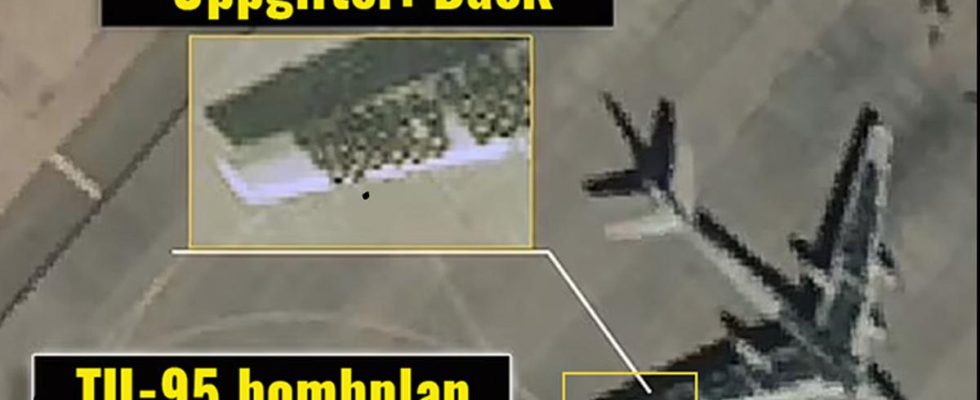Updated 00:00 | Published 2023-09-04 23:43
Ukrainian drone strikes have knocked out several Russian warplanes.
Now satellite images reveal how Vladimir Putin is trying to cover his nuclear weapons plans – with car tires.
“It’s probably to protect the valuable bombers from drones,” says former fighter pilot David Cenciotti.
The Russian nuclear forces are on high alert around the clock. In the arsenal there are strategic bombers that can carry cruise robots – mainly of the two heavy models Tu-160 and Tu-95. The Tu-95, nicknamed the “Bear Bomber”, was used during the Cold War and is Russia’s heaviest. They are built to be armed with nuclear weapons.
They have mostly been stationed at Engels Air Base near Saratov in western Russia, as well as in Belgorosk in eastern Russia. In December, the Engels base was bombed twice by Ukrainian drones – prompting Vladimir Putin to move some of the Tu-95s to other locations.
Covered with car tires
But some remain at Engel Air Base, 40 miles southeast of Moscow and 70 miles from the Ukrainian border. And now satellite images reveal how Russia’s president is trying to prevent the nuclear weapons program from being attacked again. According to Daily Mail Russia has tried to cover its wings with car tires – so that they are not detected by Ukrainian drones.
“Although the reason for covering the wings and part of the upper fuselage in this way is not entirely clear, the most likely theory is that the car tires are used to protect the valuable bombers from attacks carried out by kamikaze drones,” writes David Cenciotti, the military aircraft site The Aviationists founder with a past as a fighter pilot.
full screen
Next
The attack in Pskov is said to be part of the largest Ukrainian drone attack on Russian territory since the invasion began.
1 / 2Photo: Ostorozhno Novosti/AP
Shock absorbing rubber
On the satellite images, which were taken on September 1, it looks like all the aircraft have not yet had time to be completely covered. At the time, only days had passed since a military air base in the Russian city of Pskov, about five miles from the Estonian border, was attacked by Ukrainian drones.
Four fighter jets of the Il-76 model were destroyed, a fire broke out and two of the planes caught fire, an official of the rescue service told the Russian state news agency Paw.
According to Cenciotti, the rubber tires would be able to absorb the impact of the remote-controlled craft – and prevent them from exploding on contact. Small, lightweight drones would bounce off the tires and explode at a certain distance from the nuclear-armed aircraft, some experts say.
“Others suggest that the car tires would protect the fuel tanks in the wings from shrapnel from a drone explosion,” writes Cenciotti, who points out some weaknesses of the “improvised drone protection”.
Can catch fire
“The deck has holes and the drones would still be able to reach the upper surface of the wing. The drone could be controlled to detonate under the surface of the wing and still completely destroy the aircraft,” he writes.
“Last but not least, tires are flammable even though they need a high temperature to burn. When you store many tires in the same place and there are conditions for combustion, they can become a hazard. When tires catch fire, they burn with intense heat and produce noxious smoke.”
